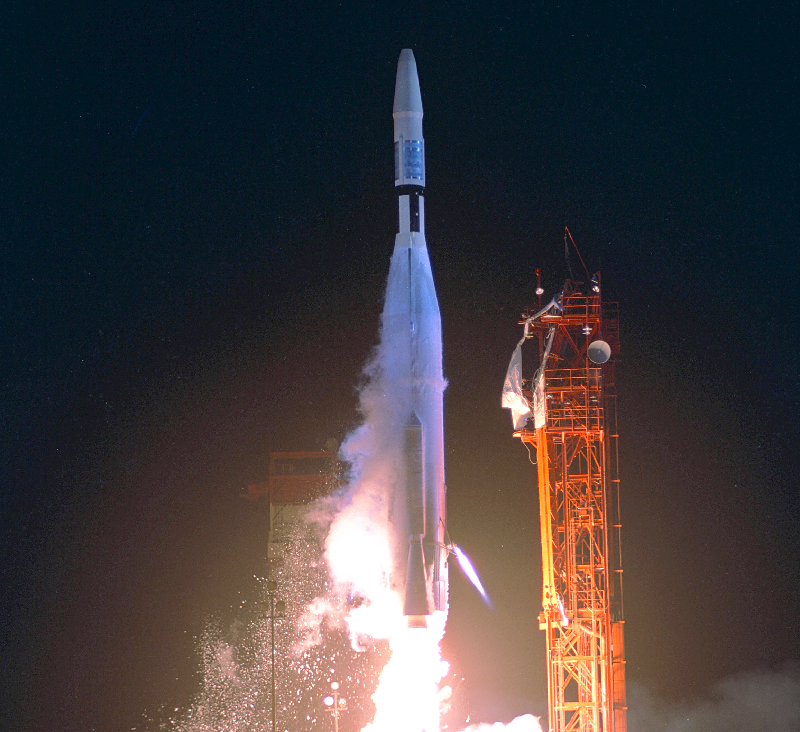In an effort to oust the Soviets in the space race, NASA’s Mariner I spacecraft was prepared to make history as the first spacecraft to complete a flyby survey of Venus. Then, on July 22, 1962, the craft suddenly exploded within five minutes of lifting off, spraying $80 million worth of debris into the ocean. Adjusted for inflation, that sum is valued at $630 million. It was then determined that the sole cause of the malfunction — and subsequent explosion — was the omission of a single hyphen somewhere in the depths of the mathematical-to-machine code.
 Photo of the actual Mariner I
Photo of the actual Mariner I
The 1962 Mariner program originated as part of President John F. Kennedy’s vow to devote additional resources toward NASA, in an effort to compete with the mounting achievements of the Soviet Union’s space program. A budget of $554 million (in 1960s money) was allocated to fund a series of 10 interplanetary directives, including the Mariner I. Less than five minutes after Mariner launched at 9:21 AM, one of NASA’s range safety officers detected an “unscheduled yaw-lift maneuver” caused by faulty applications of the guidance commands.
So what’s all this talk of hyphens? A subsequent report produced by Marine I’s Post-Flight Review Board stated that a NASA programmer forgot to insert a single “hyphen or overbar” into a string of mathematical code, causing inaccurate variables to enter the equation that governed the spacecraft’s control systems. As a result, Mariner I took a hard left, while pitching its nose downward, and crashed.
The best part, and by best, I mean the worst, is that no one at NASA bothered to thoroughly debug the code prior to its implementation. Not that this was an easy task back then; programmers did not have a high-level programming language to work with that simultaneously featured a compiler. BASIC was not released until 1964.
Nearly three decades later, another spacecraft exploded due to another similar minor error. In 1999, a $125 million ($172 million adjusted for 2014 inflation) Mars Climate Orbiter flew off course and exploded because NASA programmers forgot to convert imperial units of measurement into their respective metric measurement counterpart. The NASA Propulsion Lab’s navigation team used the metric system in its system whereas Lockheed Martin, which built the craft, provided measurements in inches, feet, and pounds.
Via Gizmodo
Advertisement
Learn more about Electronic Products Magazine





